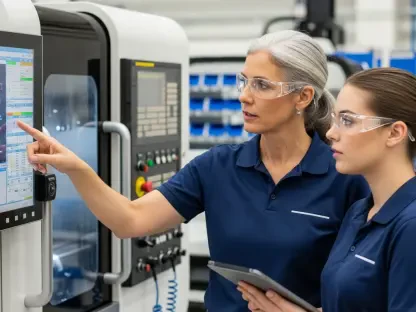Autonomous vehicles (AVs) are set to profoundly transform the transportation sector by utilizing advanced technologies to operate without human intervention. AVs employ a mix of high-definition maps, artificial intelligence (AI), sensors, cameras, and connectivity modules to interpret the external environment and make real-time driving decisions. Technological advancements in AVs have led to improvements in accuracy, reliability, and cost reduction, paving the way for their wider adoption.
Technological Advancements in AVs
The rapid progress in AV technology has primarily focused on enhancing the accuracy and reliability of key components while reducing associated costs. This progress is largely driven by advances in high-performance chips, artificial intelligence, and specialized sensors such as LiDAR and radar. For example, the cost of LiDAR has plummeted from US$75,000 per unit to under US$100, making it a cost-effective solution in AV systems. Similarly, improvements in AI computing efficiency and better software optimization have substantially reduced overall AV operational costs.
These cost reductions have made AV technology more economically viable, facilitating its transition from experimental stages to near-mainstream adoption. The integration of sophisticated AI algorithms with hardware components allows AVs to interpret complex driving environments in real-time, improving safety and operational performance. Additionally, advancements in connectivity modules ensure that AVs can communicate seamlessly with other vehicles and infrastructure, supporting the development of smart transportation ecosystems.
GCC Initiatives to Foster AV Manufacturing
GCC countries have launched ambitious initiatives to integrate autonomous mobility systems into their vision for future transportation. Saudi Arabia, as part of its Vision 2030, aims to have 15% of public vehicles in Riyadh operating autonomously by 2030. This commitment is part of broader smart mobility initiatives designed to modernize transportation systems and provide sustainable solutions. Similarly, the UAE has set a target of making 25% of all transportation trips autonomous by 2030. Dubai’s Roads and Transport Authority (RTA) backs initiatives like autonomous taxis and delivery bots, illustrating the nation’s proactive stance towards incorporating AV technology.
Ahead of the 2022 FIFA World Cup, Qatar showcased its commitment to autonomous mobility by deploying self-driving electric shuttles and issuing an autonomous vehicle strategy with a five-year roadmap. These efforts highlight the region’s dedication to becoming a leader in innovative transportation solutions.
Levels of Vehicle Autonomy
Vehicle autonomy is categorized into six levels by the Society of Automotive Engineers (SAE), ranging from Level 0 (no automation) to Level 5 (full automation). Currently, over 90% of new cars are equipped with advanced driver assistance systems (ADAS), primarily at Levels 1 and 2. These systems offer features like adaptive cruise control and lane-keeping assistance, enhancing driving safety and convenience.
Automakers such as Mercedes-Benz and BMW have announced advances to Level 3 automation, allowing certain driving tasks to be managed autonomously under specific conditions. However, Levels 4 and 5, representing high and full automation respectively, remain experimental. These levels require extensive regulatory approvals, infrastructure sensors, and driving code updates before widespread adoption can occur.
The Global AV Supply Chain
Manufacturing AVs involves a complex, technology-centric supply chain that blends traditional auto suppliers with cutting-edge technology companies. Unlike conventional vehicles, a significant portion of an AV’s value comes from its electronics and software content. Achieving higher levels of autonomy necessitates sophisticated integration between hardware, software, and safety systems, requiring custom-built platforms and dedicated AV production facilities.
The AV supply chain stretches across multiple continents, with sensors often designed in the US or Europe, manufactured in East Asia, and integrated into vehicles worldwide. Key semiconductor components originate from Taiwan or South Korea, while LiDAR and camera units can be produced in North America, Europe, or China. Managing this complex supply chain demands ensuring the quality and reliability of critical parts, a necessity emphasized by recent global disruptions and trade wars. Producers and suppliers are seeking alternative manufacturing locations with good logistics and global connectivity to mitigate these challenges.
Investments in Local AV Component Production
Incentivizing local AV component production has become increasingly strategic for many countries. The US CHIPS Act aims to localize semiconductor production, and Saudi Arabia has invested US$6 billion in EV battery metals and a steel plant to support its burgeoning EV industry. These initiatives underscore the importance of controlling key interfaces within the AV supply chain.
GCC countries, traditionally reliant on imported vehicles, are now making significant strides toward local AV manufacturing. Saudi Arabia’s launch of Ceer, its first domestic electric vehicle brand, marks a pivotal shift. Ceer, a joint venture with Foxconn and BMW, is developing a manufacturing facility in King Abdullah Economic City (KAEC) with a US$96 million investment, aiming to produce electric sedans and SUVs by the current year.
Furthermore, Saudi Arabia has attracted Lucid Motors to build its first international EV factory in the Kingdom, established in KAEC. Lucid’s plant can initially assemble 5,000 vehicles per year, with expansion plans up to 155,000 units annually. This establishes the country’s first car manufacturing plant, a significant milestone in the creation of a domestic automotive industry.
Building a Domestic Automotive Industry in the GCC
In addition to Ceer’s developments, Lucid Motors opened its first international EV factory in KAEC, reflecting another crucial step in Saudi Arabia’s automotive ambitions. Initially producing 5,000 vehicles annually, the plant aims to expand to 155,000 units per year, signaling a burgeoning automotive manufacturing sector within the Kingdom.
While Lucid’s current models may not yet be fully autonomous, the existence of a modern EV assembly facility primes Saudi Arabia for potential future AV production. The strategic investment in advanced manufacturing infrastructure sets the stage for the region to adopt and possibly lead in autonomous vehicle technology.
Autonomous Vehicle Pilots and R&D Infrastructure
Dubai and Abu Dhabi have started small-scale assembly and piloted autonomous shuttles and pods in controlled environments like Dubai Expo 2020 and Masdar City. These efforts, though limited in scope, have contributed to the development of necessary R&D and testing infrastructure, laying the groundwork for broader AV adoption.
Governments across the Middle East, seeking economic diversification, are incentivizing advanced industries such as EVs and autonomous technologies. Saudi Arabia’s Vision 2030 aims to locally produce up to 500,000 vehicles annually, offering attractive incentive packages like access to cheap industrial land, soft loans, and co-investment via the Public Investment Fund (PIF). High local content requirements and commitments to a substantial local demand for AVs bolster the viability of domestic production.
Incentives for AV Companies in the GCC
The UAE has established designated test beds for autonomous vehicles. Dubai’s RTA and Abu Dhabi’s Department of Municipalities have opened dedicated test tracks, with Abu Dhabi’s Masdar City evolving into a hub for AV innovation. The Smart and Autonomous Vehicle Industries (SAVI) cluster within Masdar City brings together automakers, technology players, and researchers, providing state-of-the-art facilities and a regulatory sandbox for experimentation.
The SAVI cluster is projected to contribute significantly to the UAE economy, offering financial grants, tax breaks, R&D support, and fast-track licensing for AV testing through the Abu Dhabi Investment Office (ADIO). The UAE granted a preliminary national license to China’s WeRide for road testing its robo-taxis, marking a significant milestone in AV adoption in the region. Infrastructure investments, including 5G networks and EV charging stations, further support the integration of electric AV operations.
The Strategic Advantages of the GCC
Comparing the GCC to established auto-technology hubs in the US, Europe, and East Asia, the Gulf region offers unique advantages for AV manufacturing. Substantial government-backed funding supports strategic projects, and low energy and utility costs are vital for energy-intensive manufacturing processes and operating fleets of electric AVs. The region’s geographic location serves demand across the Middle East, Africa, and South Asia, markets often under-served due to distant manufacturing hubs. Modern port infrastructure facilitates efficient export and import, enhancing the competitiveness of assembled products.
However, these advantages must be weighed against the deep talent pools and supplier networks found in traditional automotive hubs. Regions like Detroit, Germany’s Baden-Württemberg and Bavaria, and China’s Pearl River Delta benefit from extensive networks of experienced automotive engineers and suppliers. The current automotive supplier base in the Gulf is relatively small, necessitating the import of most parts for assembly, which increases lead times and costs unless offset by incentives. Skilled manufacturing labor is not abundant locally, requiring either imported expertise or the training of new workers—a significant challenge for emerging industries.
Managing Challenges in AV Manufacturing
Navigating the supply chain gaps, workforce skills shortages, climate testing conditions, regulatory fragmentation, market uncertainty, and technology transfer concerns is critical for companies considering AV manufacturing in the GCC. The Gulf’s arid climate necessitates additional hardening of AV components, potentially adding cost and complexity to production. Consistent regulatory standards across GCC countries are essential to harmonize policies and support stable long-term manufacturing strategies.
Market certainty for wide AV deployment involves public acceptance and evolving legal frameworks adapted to autonomous technologies. Automakers may be cautious about producing cutting-edge technologies in new regions without robust intellectual property protection and quality assurance measures, necessitating strategic safeguards for critical know-how.
Leveraging Partnerships for Success
For companies considering AV manufacturing in the GCC, leveraging joint ventures and public-private partnerships with government-backed entities offers a pathway to navigate local business environments and secure incentives. A phased approach, starting with semi-knocked down (SKD) or completely knocked down (CKD) assembly, and gradually ramping up localization mitigates risks and builds supply chains incrementally. Focusing on niche AV products tailored for regional preferences, such as autonomous shuttles or luxury AVs, adds strategic value to local facilities.
Capitalizing on the region’s modern infrastructure and energy advantages enhances sustainability and operational efficiency. Investing in local talent development through training academies, internships, and scholarships not only meets workforce demands but also aligns with government job creation initiatives.
The Future of AV Manufacturing in the GCC
Autonomous vehicles (AVs) are poised to revolutionize transportation by leveraging cutting-edge technology to function without human drivers. These autonomous systems integrate high-definition maps, sophisticated artificial intelligence (AI), various sensors, cameras, and connectivity modules to comprehend their surroundings and make real-time driving decisions. The technological advancements in AVs have not only enhanced their accuracy and reliability but also significantly lowered their costs, making them more accessible for widespread use. The potential for these vehicles to transform urban mobility, reduce traffic congestion, and improve road safety is immense. By continuously analyzing data from their environment, AVs can adapt to different driving conditions, detect potential hazards, and respond to unexpected situations more efficiently than human drivers. Furthermore, they can communicate with other vehicles and traffic infrastructure to optimize traffic flow and reduce delays. This evolution in transportation technology promises a future where the convenience, safety, and efficiency of road travel are significantly enhanced, paving the way for broader adoption of AVs in both public and personal transportation scenarios.









